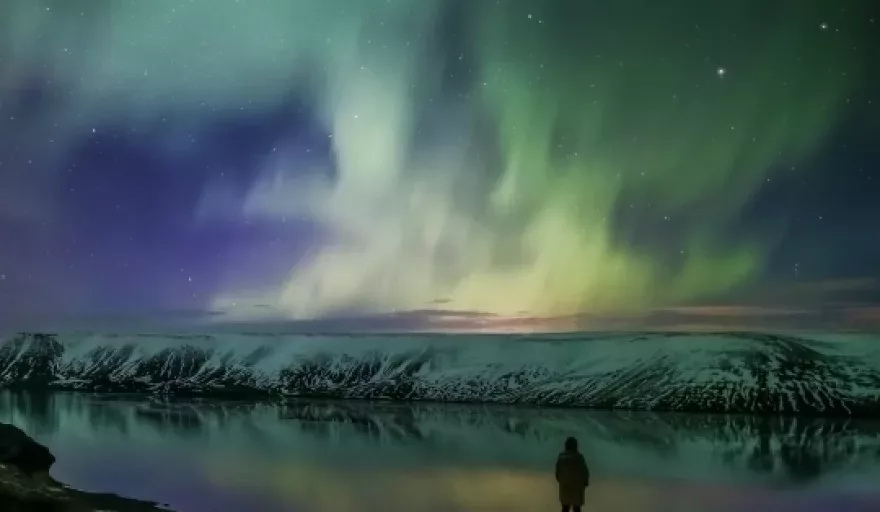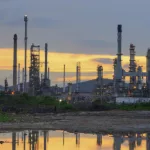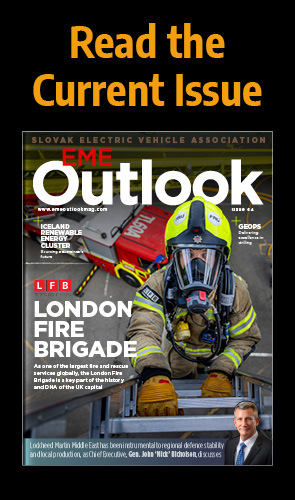Much like the rest of the world’s capital cities, Reykjavík is its country’s hub; it’s beating heart, its economic control room, its cultural instigator. Unlike the rest of the world’s capital cities though, Reykjavík remains one of the most picturesque, open, sparse and clean destinations that planet earth can boast.
And the planet would have every right to boast it as well. A trip to Reykjavík isn’t your stereotypical melee through bustling streets, traffic jams around every corner, or endless queues to capture a glimpse of various landmark attractions. It is instead an homage to the natural world at its very best.
Naturally, the city has incorporated infrastructure and economic prevalence into its organic make-up in order to keep the country ticking over throughout the decades, but it is no coincidence that its key financial driver even to this day is tourism. If any city had cause to fly the slogan ‘build it and they will come’ above the city gates, then surely it would be Reykjavík.
And they do come: tourists, business travellers, scientists, historians. For a weekend break or a month of exploration, there isn’t a demographic that the city doesn’t attract. And for the lucky swathes who are actually sent to Reykjavík for ‘business’ each year, it is fair to assume that no amount of boardroom activity could detract from the overall ‘bizcation’ experience.
Engulfed by stunning coastline and uncountable peninsulas, coves, islands and volcanic architecture, “all around Iceland there is a multitude of experiences waiting and it has been exciting to see all the new product developments more diverse visitor accommodations, and activities on offer happening around the country”, as Gunnar Sigurðarson, Manager of Visit Iceland & Creative Industries at Promote Iceland enthuses. “We want to see the country continue to thrive but in a way that protects it at the same time. For tourists, Iceland is yet mostly undiscovered. Our message is simple: ‘Explore Iceland, go further, stay longer’.”
FACTS AND FIGURES
Country: Iceland
Languages: Icelandic
Area: 273 square kilometres
Population (2015): 130,000
Currency: Icelandic Krona
Time zone: UTC+0
Dialling code: +354
Internet TLD: .is
Climate: Sub-polar oceanic/subarctic/tundra
Lowest recorded temperature: -19.7 °C
THE BUSINESS END
Initially founded in 1786 as a trading town, its significance as a national and regional core of political, business and social development has culminated in a modern day status as one of the safest and greenest cities in the world once combined with the peripheral, organic prominence of the area.
Subsequently becoming the centre of Iceland’s overall growth throughout the centuries, it is perhaps a little unfair that its notoriety in more recent times has come virtue of the 2008 economic meltdown in the country. Just two years on from being named the richest city in the world by The Economist Group in 2007, the country was thrown into disarray by 2009, as numerous projects were halted, investments were no longer a viable option and foreign business interest waned.
For any other city, this would be an irreparable disaster, but for a country that has primarily always relied on plus-points untainted by boardroom implications, there is now a northern light at the end of the tunnel.
“The tourism industry is today the largest revenue-generating industry for Iceland. The Government has been putting more emphasis on the industry with a long-term emphasis on sustainable development and better infrastructure,” Sigurðarson explains. “In 2012, Iceland had the highest seasonality among the Nordic countries. Only three years later it decreased by more than 20 percent though, meaning that the increase in visitor arrivals is happening in off-season months. At the same time, visitor guest nights have increased by 18-31 percent – on average – year-on-year in every region of Iceland.
“This all provides more sustainability as well as creating a whole year-round industry which was not the case before.
“Tourism has been the only job-creating industry since the financial recession, increasing employment from around 11,000 in 2011 to 25,000 today; accounting for 13 percent of the Icelandic workforce. In 2015, the tourism sector contributed seven percent to the national GDP, compared to four percent a few years ago.”
Q&A WITH PROMOTE ICELAND
One Company to have overseen both sides of the Icelandic coin over the past seven years is Promote Iceland who, as a public private partnership since 2010, has looked to revive the country’s good image and reputation by encouraging not just tourism, but the key economic drivers and industries that will make the nation more sustainable in the future.
“Promote Iceland looks to attract foreign tourists and investments to the country, while assisting in the promotion of Icelandic culture abroad,” Manager of Visit Iceland & Creative Industries at the Company, Sigurðarson states. “The idea was to combine all promotional efforts for Iceland together under one organisation; including trade, tourism, culture and foreign direct investments. This is also done in close cooperation with Icelandic embassies and consulates abroad, as well as bilateral chambers of commerce.
“At the same time that Promote Iceland was being established in 2010, the volcanic eruption in Eyjafjallajökull happened causing a crisis for the tourism industry. So, for the first time the Government, municipalities and the private sector joined forces with an integrated marketing initiative.
“Since then, the public and private sector has worked under the umbrella brand of Inspired by Iceland for Iceland as a destination with Promote Iceland in charge.”
With a strong focus on promoting Iceland for its natural beauty, its economy, its culture and its people; the key message that Promote Iceland has tried to instil since then has been surrounding the constant development and progress in these areas in order to make the country a more wholesome proposition to locals, tourists and business executives alike.
Sigurðarson continues: “Today, tourism is the largest revenue-generating industry for Iceland, larger than the fishing and aluminium sector combined. When Promote Iceland started it was the third largest and far behind the two others. Our focus in cooperation with the tourism industry has been on decreasing seasonality and in promoting new regional destinations in Iceland.
“This past year we have also put more emphasis on our marketing efforts, and on educating and informing visitors – before and during their stay – about Iceland´s fragile nature, responsible travel behaviour, local culture and Icelandic peculiarities.”
The response over the past seven years has been exactly what Promote Iceland had hoped for with 95 percent of visitors stating their satisfaction from their visit; indicating a more sustainable and year-round make-up to Iceland’s attractiveness.
“To add to this, the Government and the Icelandic Travel Industry Association has joined forces and devised a new Road Map for Tourism,” adds Sigurðarson. “Launched in October, 2015, the Road Map provides a long-term tourism strategy with an emphasis on sustainable development. The long-term vision is that the tourism industry will become a sustainable and profitable sector yielding stable foreign exchange earnings for the economy, and increasing the prosperity and the quality of life in Iceland by 2030.
“The top priority is to invest in product development and the necessary tourism infrastructure to accommodate the growing number of visitors. The Tourism Task Force has started several projects in order to support the infrastructure; such as improving tourist safety, increased funding for development, maintenance and protection of tourist attractions, improving public toilet availability, the protection of the Icelandic nature, and more.”
Studies have shown that the vast majority of Icelandic people are bought into this strategy and are welcoming towards tourists looking to share their natural beauty. And this idea can only be taken one more positive step further for business travellers; upon the realisation that each ‘tourist’ would be bringing vital income into the country as well.
“People from all over the world come to Iceland to experience the stunning beauty of our country, the specific characteristics of our culture, and the hospitality of the locals. We value and respect all of these things and have a clear, long-term strategy to ensure that we protect them,” Sigurðarson concludes.
OUT AND ABOUT
Inevitably, when ‘out and about’, the primary go-to places are wherever your gaze fancies. The natural aesthetics of Reykjavík account for the vast majority of landmarks and must-sees around the city, and this is largely thanks to the widespread, amply spaced nature of the capital in general.
Being very small in size, it has the feel of a coastal town, placed upon a backdrop of idyllic views, yet secretly embedding the serious and vital economic cogs that keep Iceland afloat.
Outside of your scheduled plans to this less appealing business underworld though, you’ll hardly notice it’s there, and can instead focus your attentions on the fantastically personable and sufficiently catered for eateries, retail outlets, museums, leisure facilities and nature trails.
So friendly are these service providers that they don’t even expect you to tip them as you venture from bar to bar, or restaurant to diner. And with more than 200 food & drink options, regular festivals, and a thriving art and music scene; you certainly won’t find yourself short changed if you’re looking to blow off some steam during your evenings.
And speaking of blowing off steam, volcanoes offer just one of the numerous daytime activities available in the area, as you begin your exploration around the one-of-a-kind island.
And if you’re struggling to choose which landmark to visit next, then tour operators such as Choice Tour Iceland can be your guide; offering deals to show you the South Coast ‘Black Beach’, Blue Lagoon, glaciers, the Golden Circle, Reykjavík forest, Landmannalaugar mountains, the Snæfellnes Peninsula, and of course the Northern Lights.
OUTLOOK RECOMMENDS
“People from all over the world come to Iceland to experience the stunning beauty of our country, the specific characteristics of our culture, and the hospitality of the locals.” – Gunnar Sigurðarson, Manager of Visit Iceland & Creative Industries at Promote Iceland
Nature
Choice Tour Iceland
Reykjavík Botanical Gardens
Museums
Art and Culture
CIA.IS Center for Icelandic Art
Retail
Laugavegur
Leisure
Hospitality
Opal Apartments
Food & Drink
TRANSPORT LINKS
“In 2010 only four airline services were flying to Iceland,” Sigurðarson says. “Today there are 25 airline services – 14 in the winter and 11 all year round – flying to Iceland, with direct flights to 80 destinations.
“With this change, Reykjavik has been developing as a meeting destination and is now one of most popular emerging international meeting cities. And more and more are realising that Reykjavik is closer than they think; only three-five hours away from mainland Europe and five-seven hours from North America.”
Keflavík International Airport and Reykjavík Airport are the two portals facilitating this heightened influx of visitors to the country, but once there, public transport doesn’t carry anywhere near the same amount of importance as it does in most other major cities around the world.
For one, you can walk to most places if the mood (and the weather) suits. Even cycling isn’t beyond the realms of possibility as long as you don’t mind a few hills and a bit of wind.
Undoubtedly the most popular mode of transport if you’re looking to explore all corners – and even beyond the jurisdiction – of Reykjavík, however, is by car. Again, while not needed in the city centre, it is by far the best method to navigate what is a relatively small area in efficient fashion.
Trains are essentially non-existent and boats will of course be vital in terms of reaching one of the many islands, but job one for every traveller is to ensure that every inch of the Golden Circle is covered by road.
Surrounding all popular landmarks, the 300 kilometre stretch of road can either be done in a week or a day depending on your schedule and how much time you want to spend lazily gazing at each checkpoint; and provides visitors with the most formulaic and navigable route around Reykjavík’s star attractions.
LANDMARK ATTRACTIONS
Heidmörk Nature Reserve
“Situated on the southeast outskirts of Reykjavík city is Heidmörk – a wonderful recreational area with many trails leading through a vast expanse of bushy vegetation and lava formations. Some of the park’s most notable features are the Raudhólar or ‘Red Hills’ – the remnants of a cluster of pseudocraters in Ellidaárhraun lava field. Heidmörk is a favourite with the locals, especially for sports enthusiasts, those with children and couples looking for a romantic retreat!” – Visit Reykjavik
Golden Circle
“If you can’t spend a full week driving Iceland’s Ring Road (which circles the country), renting a car and driving the smaller Golden Circle route on your own is a perfect option. Driving the Golden Circle is a popular day trip for visitors to Iceland. The 300km route covers many beautiful landmarks in a short period of time.” – Expert Vagabond
Southern Iceland Glaciers
“Discover the scenery of South Iceland on this full-day tour from Reykjavik. Journey past lava fields, icebergs and glacier lakes as you explore the Sólheimajökull and Mýrdalsjökull glaciers. Keep your camera poised as you admire the black sand beaches and dramatic rock formations of Vik, as well as the mighty Skogafoss and Seljalandsfoss waterfalls.” – Viator.com
Northern Lights
“The northern lights are one of the biggest draws to visiting Iceland, however they are also one of the most elusive and unpredictable attractions this country has. Although it would be great to easily pinpoint a how to see them, there are a lot of variables to consider for seeing them: season, weather, length of stay, location and luck. Of course, there are lots of fantastic things to do in Iceland and it’s always best to think of seeing the northern lights as an added bonus.” – Northern Lights Iceland




















